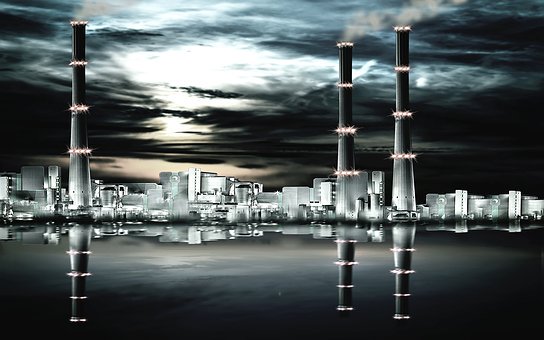The world is in the midst of a waste crisis. Tonnes and tonnes of waste is being produced and dumped at landfill. At the same time there is the worry of fuel shortages. Can the two issues be solved together?
Countries such as the UK, and USA have already been using waste-to-energy solutions to address these problems. In recent years the amount of waste collected by local authorities in England for the purpose of waste-to-energy incineration peaked at 11.03 million tons But, what developments can be made in the industry? There are various new methods of dealing with waste that will offer benefits to society. However, are all waste-to-energy methods viable or are some less environmentally friendly?
In this article we will investigate the status of waste-to-energy solutions and how waste could provide energy in the place of fossil fuels.
More can be done to stop the crisis
In the past decade there have been many improvements made in the fight to combat waste. The 5p plastic bag levy for one, and the introduction of a doorstep recycling collection in the UK just to name a couple. But what happens after we pop our rinsed-out food containers in our blue bins? Well, it might not always be recycled: in the wake of China’s plastic waste import ban in 2017, it was revealed that much of the waste marked for “recycling” had been sent to the country and was contaminated by general waste or food residue. Therefore, it unfortunately ended up as landfill and incorrectly counted towards the UK’s recycling target.
Landfills are a major problem. Not only are they an eyesore, but according to Prescouter, as waste breaks down on a landfill, gases such as methane and dioxins are released, along with a toxic liquid known as leachate. Leachate has the potential to contaminate soil, water, plants, and food.
What methods of waste-to-energy are being used
These are the current methods of waste-to-energy solutions outlined by Prescouter:
- Thermal – this includes direct combustion which is known as incineration. The waste is directly burned, and thermal energy collected.
- Mechanical and Thermal – this method sees waste being dried and pulverised before becoming solid fuel. That solid fuel can then be burned for thermal energy.
- Thermo-chemical – thiscovers torrefaction, plasma technology, gasification, pyrolysis, and liquefaction.
- Torrefaction changes biomass into a substance akin to coal for better fuel properties.
- Plasma technology uses plasma to turn organic material into syngas. This syngas can then be used as fuel.
- Gasification is like plasma technology. It transforms organic or fossil fuel materials into gases like carbon dioxide for fuel.
- Pyrolysis uses decomposed materials to thermally to produce liquid fuel.
- Liquefaction is a process where liquid fuel is made from solid waste.
- Biochemical – this uses fermentation and anaerobic digestion. Fermentation produced ethanol, and anaerobic digestion involved microorganisms breaking down waste and producing biogas.
What are the problems with waste-to-energy methods?
The main issue with thermal methods of waste-to-energy solutions such as incineration is that it produces harmful ashes and emissions when long form carbons such as plastic is burned, therefore harming the environment.
Waste-to-energy solutions have their advantages
There are several benefits to using energy from waste. Such perks include landfill reduction, avoidance of landfill tax and charges, and of course, renewable energy. Unlike fossil fuels, waste is not going to drop in availability. Bioenergy consult points out that, while more than 50 per cent of waste is burnt for energy, it is a “short carbon cycle” that means the original matter doesn’t contribute to climate change originally. In contrast, long carbon cycles like plastic have already contributed to climate change in their creation and burning them for energy would offset some of that carbon cost.
If produced and monitored correctly, waste-to-energy could offer a renewable source of energy with a low carbon emission rate. Using waste as the catalyst for creating fuel isn’t the issue as much as the process in which the fuel is obtained. As discussed, incinerating fossil fuels or waste for energy is problematic, but other methods such as biochemical processes could see waste provide energy while simultaneous reducing the volume of rubbish.
What will the future look like for waste-to-energy?
To help combat our waste issue, waste-to-energy is a viable solution to stop using fossil fuels and reduce our waste volume at the same time? The challenge now is to make sure that the emissions from these energy processes are monitored and reduced as much as possible. Dubai is already in the final stages of financing the world’s biggest waste-to-energy plant.
Companies like Reconomy who provide services such as hazard waste management are educating themselves by partnering with the Supply Chain Sustainability School to educate themselves on the new processes being developed to create a more sustainable future within the Construction and Infrastructure sectors.



 Bitcoin
Bitcoin  Ethereum
Ethereum  Tether
Tether  XRP
XRP  Solana
Solana  USDC
USDC  TRON
TRON  Cardano
Cardano  Lido Staked Ether
Lido Staked Ether  Avalanche
Avalanche  Toncoin
Toncoin